45min Intermediate
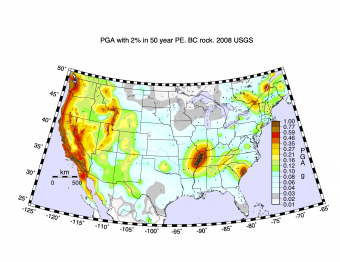
How can we model earthquakes in the classroom?
Geoscientists use probability to describe potential earthquake effects in a given location. This exercise will explore seismic hazards for various regions, which can be described by the likelihood of a certain level of ground shaking for a particular region. Once the seismic hazard is quantified, the seismic risk can be estimated by determining the potential effects of the shaking on buildings and other structures. Students begin by finding the probability of an earthquake of a particular magnitude occurring during different periods in different regions, and comparing these results. Next, students investigate the probability that the ground in each region will shake by a certain amount, during a given length of time and compare those results. Finally, students consider the societal implications of these hazards and how this seismic hazard information might be used to improve community resilience.
The development of this resources was funded by the National Science Foundation via Award # 0942518
Students will be able to:
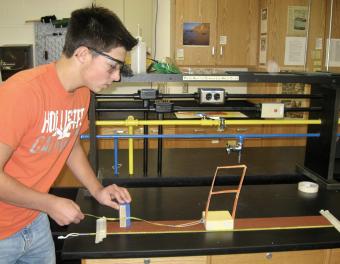
Using a block-and-sandpaper model, students collaborate in small groups to investigate how energy is stored elastically in rocks and released suddenly as an earthquake (the earthquake cycle). This activity emphasizes the role of mechanical models in understanding and testing ideas in science.
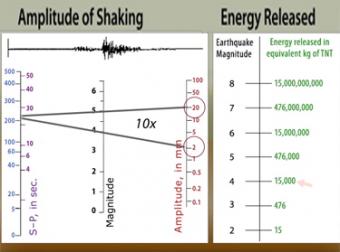
The "moment magnitude" scale has replaced the Richter scale for large earthquakes. Scientists have developed far-more sensitive seismometers that, with faster computers, have enabled them to record & interpret a broader spectrum of seismic signals than was possible in the 1930's, when the Richter magnitude was developed. Find out what scientists learn from seismograms.
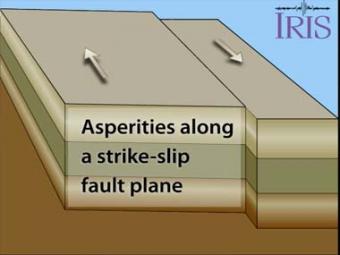
An asperity is an area on a fault that is stuck or locked. Scientists study areas along long fault zones that have not had earthquakes in a long time in order to determine where the next earthquake may occur. As long faults move, all areas of it will, at some point, become "unstuck" causing an earthquake relative to the the size of the asperity that finally breaks.
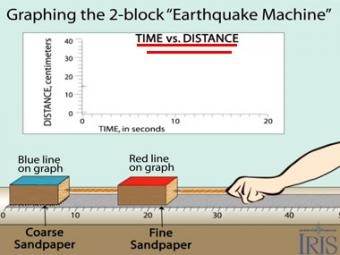
Graphing time vs. distance using the classic block-and-sandpaper "earthquake machine"
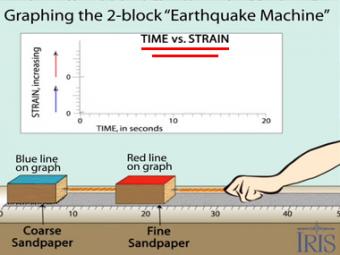
Graphing time vs. strain using the classic block-and-sandpaper "earthquake machine"
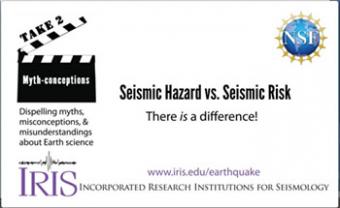
A seismic hazard is the probability that earthquake shaking of a certain intensity will occur in a given geographic area, within a given window of time. From that, risks can be assessed and included in mitigation efforts. Let's compare them.

A seismic hazard is the probability that earthquake shaking of a certain intensity will occur in a given geographic area, within a given window of time. From that, risks can be assessed and included in mitigation efforts. Let's compare them.

This demonstration shows that rocks are elastic by squeezing a slit core of rock.
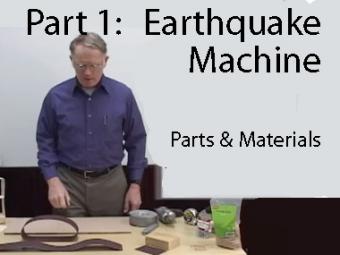
This video shows how to build the "Earthquake Machine", a physical model that represents the “earthquake cycle”, the slow accumulation of elastic energy in rocks on or adjacent to a fault followed by rapid release of elastic energy during an earthquake.
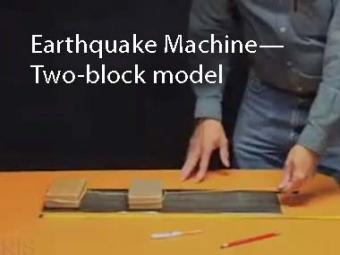
THE two-block "Earthquake Machine" uses two blocks with different grit sandpaper to model interactions between adjacent patches along a fault.
We encourage the reuse and dissemination of the material on this site as long as attribution is retained. To this end the material on this site, unless otherwise noted, is offered under Creative Commons Attribution (CC BY 4.0) license